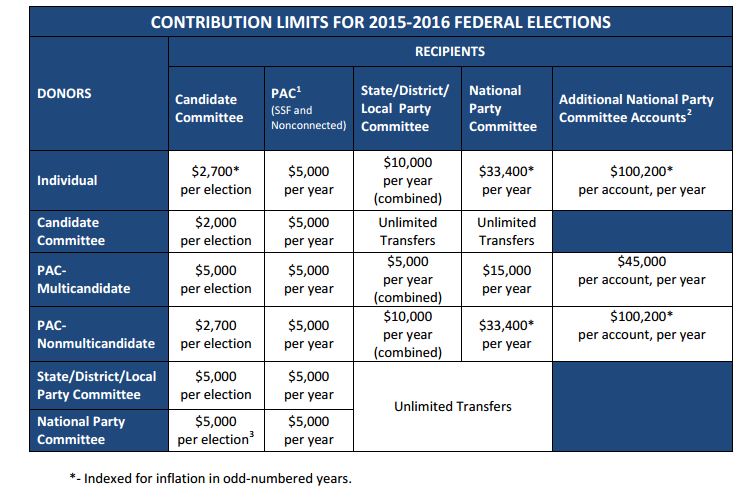Have you donated to a campaign before? This recent New York Times article highlights the increasing number of women donors and bundlers for political campaigns in both parties, combating both “the expectation even among women that other women are not donors,” and the perception that women are more comfortable giving to causes rather than political campaigns.
“In interviews, female donors in both parties described cascading cultural and economic changes that were driving their participation in political giving, long among the most exclusive men’s clubs in American culture. More women are founding their own companies or rising to lead family businesses, or have already sold or retired from them, a common springboard to the upper reaches of political fund-raising. Within marriages, they said, women now had more authority to steer family decisions about political giving.”
– “Women’s Rising Influence in Politics, Tinted Green,” The New York Times, Nicholas Confessore, May 2016
Many women donate to causes; fewer donate to campaigns, but that is changing according to the article above, and it’s a good thing because supporting candidates who advocate your policies is one way you can make a difference. In order to be considered viable, candidates often need to raise money for their campaigns and political parties. Many must raise at least $100,000 before the primaries, then another $150,ooo before Labor Day. To make sure your candidate remains in the race, they need support. And while it seems from the media that large donors dominate the fundraising landscape, it’s interesting to note that 57% of individual campaign donations to Barack Obama’s 2012 campaign were under $200 each.
The world of campaign finance and the legal issues involved can be confusing and complicated. See below for a run-down on some basics on the vehicles for fundraising, including committees, PACs and non-profits:
- Exploratory Committees
- Organizations that support a candidate who is considering running for office.
- Don’t have to report their finances to the Federal Election Commission (FEC) – but a campaign committee does.
- Can raise and spend money for preliminary activities, e.g., polling, travel, phone calls.
- Restrictions, same as a regular campaign: $2,500 per donor per election fundraising limit, no corporate or union donations.
- PACs, 501(c)4s and 527s are NOT allowed to support a candidate who’s considering running for office.
- When the candidate becomes an official candidate, they have to register with the FEC and transfer funds into a campaign account and disclose it.
- Candidate Committees
- For official candidates registered with the FEC
- Contribution limit for an individual is $2,700 per election (or $5,400/couple)
- Joint Fundraising Committees (JFCs)
- Can be created by to or more candidates, PACs, or party committees
- Share costs of fundraising and split proceeds
- Participants can’t take any more money from a donor than they would if the money was given directly
- Allows donor to write one big check to fund multiple candidates
- Political Action Committees (PACs)
- Established and administered by corporations, labor unions, membership organizations or trade associations.
- Spend money on elections, but not run by a party or an individual candidate – but can donate money to parties or candidates that they support.
- PACs can give money directly to candidates and political parties.
- If a non-multi-candidate PAC, contribution limits are:
- $2,600 to each candidate or candidate committee/election
- $32,400 to national party committee per calendar year
- $10,000 combined limit to state, district and local party committee per calendar year
- $5,000 to any other political committee per calendar year.
- Multi-candidate PACs
- Have over 50 contributors
- Donate to at least 5 federal office candidates
- Contribution limits: $5,000 to each candidate or candidate committee per election; $15,000 to the national party committee per calendar year; $5,000 combined limit to state, district or local party committee/calendar year; $5,000 to any other political committee/calendar year
- Super PAC
- Relatively recent – in 2010, in the Supreme Court case “Citizens United,” when the justices ruled that spending money on election ads is a form of free speech, so groups can spend as much cash on them as they want.
- Can’t contribute directly to the campaign or pay for travel, lodging, etc.
- Can spend on TV ads, no spending limit on ads supporting their candidate
- Nonprofit c4s and c6s (often called “dark money” in the media)
- 501(c)4 non profit “social welfare” groups (ex., gun rights, or “green” energy,) or 501(c)6 trade association groups.
- Can receive unlimited contributions from corporations, individuals, unions and spend to influence elections.
- Not required to disclose donors.
The table below lists out contribution limits to each type of vehicle for the 2015-2016 federal elections.
 Source: Federal Election Commission
Source: Federal Election Commission
So why donate to a campaign? It is one way to exercise your voice in an election. If you want to see your preferred candidate win, the reality is that they need resources to do so.